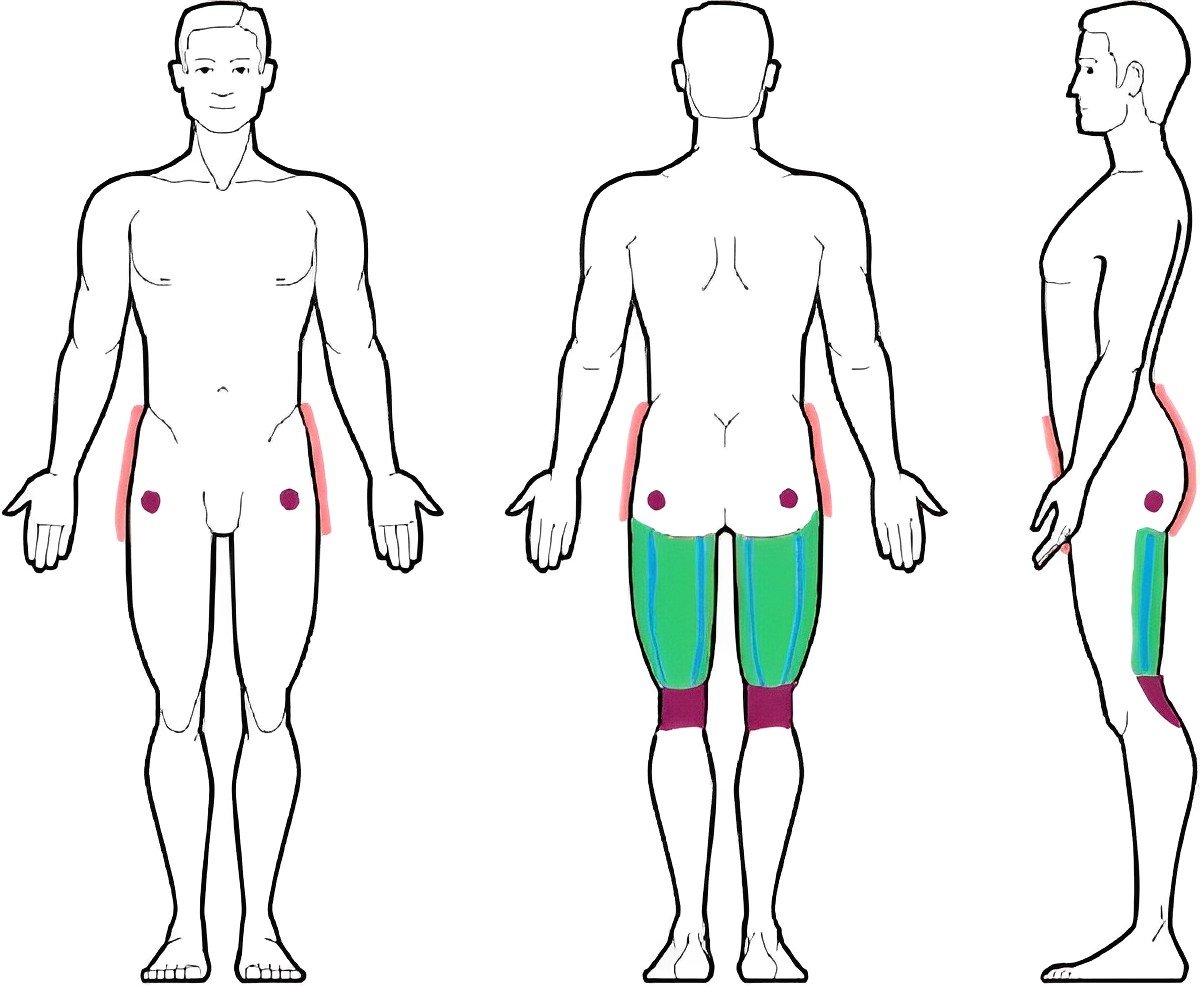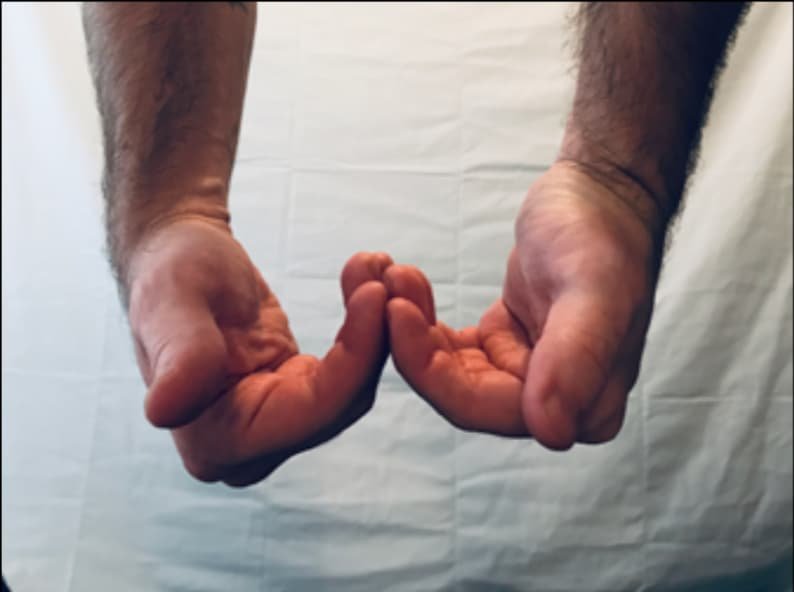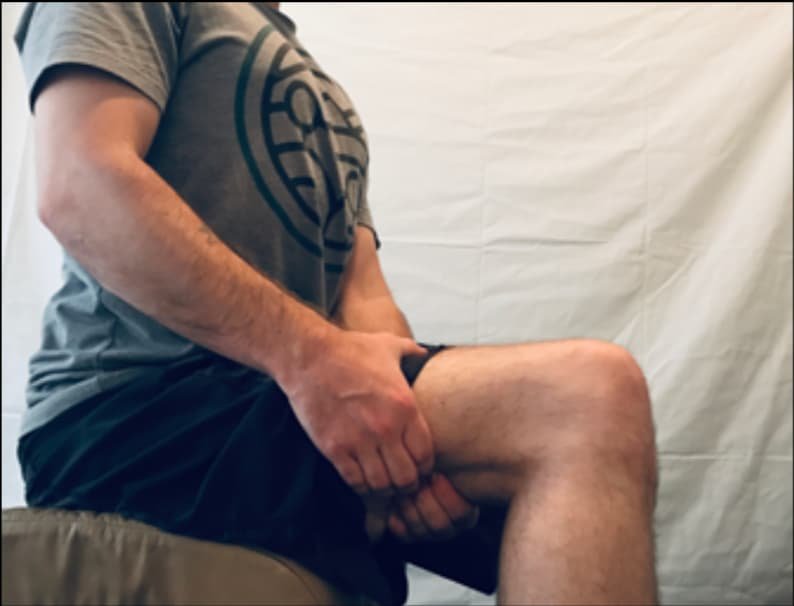Hamstring Splitting
Fascia Relief:
Benefits:
Opens up tight hamstrings with little effort, helps take pressure off surrounding muscles and joints, improves hip hinge capabilities, helps improve posture
Hamstring Splitting is very similar to Quad Splitting. We’re using invisible-to-the-eye fascial seams that, when opened, can bring relief and improve lower body functioning. This technique is great for the home, office, or before a workout.
Test how your hamstrings feel before we begin. You can do this seated by grabbing underneath and squeezing the muscle, standing and lifting a knee up to do the same, or by hinging over and reaching behind to status-check how they feel in an elongated state. The important part is to use the same test after the mobility.
This technique can be easily accomplished by sitting on the edge of a chair at your convenience. On either side of the hamstring group, we have: the outer-thigh muscle (vastus lateralis) and the inner-thigh muscles (adductor group). It’s along these muscle borders we’ll find our invisible fascial seams.
Discovering these lines:
The first line or “seam” you’re looking for is between the vastus lateralis and the hamstring group. With your hand on the outside of your leg, feel the large, flat ligament covering the whole side of your outer leg. Push your fingers into this tendon to feel its density. Allow your fingers to slide towards the posterior (back, behind) side of your thigh. Eventually, you’ll drop off the dense tendon and onto the softer hamstring muscle. It’s at this drop-off you’ll want to work up and down the length of, from hip to knee.
The second line or “seam” is between where your hamstrings end and your adductor muscle group begins. Again, while sitting in a chair, feel the back-inside of
your knee. This tendon is the beginning of the second hamstring line. Use this tendon as a guide and follow it straight up the thigh, back towards the hip. This line ends when you reach your sit bone.
The technique:
Sit on the edge of your chair and relax your legs. Meet both your hands underneath one leg. Curl your fingers up, so the backs of your fingernails are touching. Push your coupled fingertips into one of the lines running up the back of your thigh. You can more easily apply pressure with your hands into the fascial seam by leaning your upper body back. Follow through by pulling your two sets of fingertips away from each other.
After, move up or down these seams, one hand-length at a time. Try to follow the subtle feeling of separation that’s occurring as you’re creating it.
Remember to recheck the density of your hamstring muscles after, by using the same test as you did before you began.
Quick Reference:
1. This technique can be performed sitting on the edge of a chair. Curl your fingers up so the backs of your fingernails are touching.
2. Place your fingers anywhere along the line and allow them to sink into the muscle. Next, draw your fingers away from each other. After, move up or down the line, one hand length at a time. Continue along the length of both lines.






